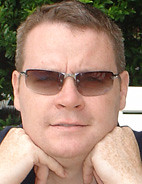Tiger Tiger, burning bright
The title will be the last of the awful puns from me surrounding the launch of Apple's next generation of Mac OS X. Codenamed Tiger - or, more prosaically, 10.4 - there's a mini review in today's paper which concludes that although not a whizzbang upgrade, the €130 asking price is money well spent.
Due to reasons of space and time (mostly Apple's refusal to let review copies out the door before they hit the shops - cheers), the review skates over the chief reasons why OS X has matured into a polished, intuitive and powerful operating system with Tiger's birth.
Like Apple's best software, each day with Tiger finds something new to love. Many of the reasons lie with the Spotlight search technology, which tracks every file, and (almost) every bit of text on your hard drive. Not to mention tons of metadata about those files. Metadata includes details such as (with digital photos) the exposure of the picture or (in the case of documents) their author. And heaps more besides.
Automator is a simplified form of AppleScript and resembles Photoshop's Actions for automating repetitive tasks. But its uncomplicated interface means you don't have to be a geek to understand how to set it up. Like Spotlight, it's a feature with huge potential when developers get up to speed with it.
Dashboard groups several mini-programs - such as calculator, dictionary, etc - into one invisible layer which pops up and disappears with a press of F12. The selection of widgets ain't earth-shattering so far but the latent power is, again, tremendous.
None of this would be worth a toss if Tiger wasn't nimble on its toes. But once again Apple has continued its run of making each successive revision run faster (on the same hardware!). Can you imagine Microsoft making the successor to XP perform as well or better on a four-year-old machine? Granted, Apple was starting from a low base with the ultra-sluggish first edition of OS X and Tiger doesn't quite hit the high mark of OS9. But there's little meaningful between them now.
Also in today's column, there's a longer look at the Nokia trio unveiled last week. Just reading back my notes from the Amsterdam extravaganza a couple of points are worth sharing. Nokia reckons the cameraphones won't shoot up in resolution now that it has hit acceptable baseline of two-megapixels.
Although Samsung has demoed a 7MP cameraphone, manufacturers are more likely to concentrate on improving the optics (as Nokia has done), improving the flash (one Nokia exec told me a xenon flash - as found in real cameras - is a long-term possibility to replace current LED versions). In the short term, expect most cameras to feature 1MP at least.
It's unlikely we'll see an optical zoom in a Nokia soon either. The exec spoke of the difficulty in squeezing the mechanics inside a handset. This hasn't stopped Sony from creating a perpedicular lens in its cool little T series cameras, though, so there's hope yet.
Finally, this week's games include Splinter Cell: Chaos Theory for N-Gage (buggy but enjoyable), Stolen (gammy SC rip-off) and Altered Beast (pretty dreadful coin-op conversion).


0 Comments:
Post a Comment
<< Home